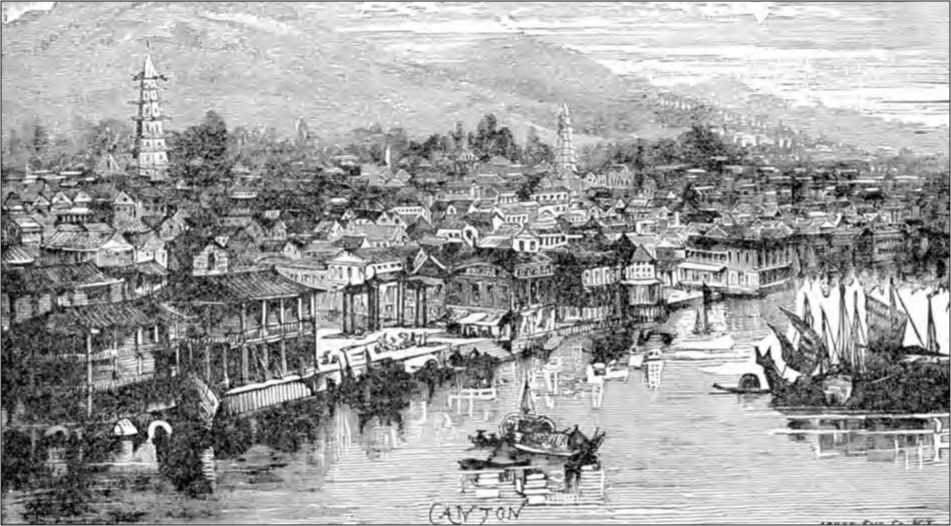The Treaty: Formal agreement between the United States and China that allowed substantially increased Chinese immigration to the United States Date: July 28, 1868
Significance: The Burlingame Treaty permitted almost unlimited and unrestricted immigration by Chinese to the United States. It annulled several state laws that had restricted Chinese immigration. Passed at a time when significant domestic opposition to Chinese immigration was emerging, it was the final agreement with China that encouraged immigration before the federal government introduced severe restrictions.
The Burlingame Treaty of 1868 allowed Chinese immigration to the United States with few regulations. Chinese had begun coming to the United States mostly because of the discovery of gold in California, and they also played an important role in constructing railroads. In addition, they served as a source of cheap labor for American businesses. Their numbers gradually increased during the mid-nineteenth century. Around 1850, approximately 10,000 Chinese came to the United States. During the mid-1850’s. By 1867, approximately 50,000 Chinese lived in California alone.
The Burlingame Treaty amended the Tientsin Treaty of 1858. The new treaty arose partly out of China’s concerns about many U. S. state laws that discriminated against Chinese immigrants. In addition, the Chinese government wanted recognition of its own territorial integrity and national sovereignty. Consequently, the agreement also permitted China to have consuls at American ports who were similar to those of other national powers. Furthermore, the United States wanted more access for its people and products to the Chinese market. The reasons the United States entered into the treaty were primarily economic, and because anti-Chinese sentiment was growing within the

Canton, the only Chinese port open to American trade during the mid-nineteenth century. (R. S. PealeandJ. A. Hill)
United States, American participation in the agreement proved politically challenging.
The treaty is named after Anson Burlingame, an American diplomat who served as U. S. minister to China during the 1860’s. Because of the respect he earned from the Chinese government, they asked him to lead their own diplomatic mission to the West. The agreement contained a reciprocal provision, which meant that Chinese immigration to the United States would not be heavily regulated. Industrial interests within the United States were strongly supportive of the treaty. The treaty’s clause regarding immunities and privileges was strongly endorsed by China in order to prevent discrimination and violence against Chinese living in the United States.
The growing opposition to Chinese immigration was strongest in the western part of the country. American-born workers vehemently objected to the presence of and further immigration by Chinese, whom they perceived as competitors for their jobs. Indeed, anti-Chinese riots occurred in San Francisco in the latter part of the 1870’s. In the 1876 national elections, both Democrat and Republican candidates took anti-Chinese immigration stances in their platforms. However, in 1879, when both houses of the U. S. Congress passed a bill to regulate Chinese immigration, President Rutherford B. Hayes vetoed it because it would violate the Burlingame Treaty.
The Burlingame Treaty was eventually annulled by subsequent American legislation. Pressure from various interest groups within the United States led to the passage of multiple acts that gradually reduced Chinese immigration. The Chinese Exclusion Act of 1882 basically prohibited Chinese from coming to the United States. After numerous renewals, its ban was finally lifted in 1943.
Kevin L. Brennan
Further Reading
Chen, Jack. The Chinese of America. San Francisco: Harper & Row, 1980.
Lee, Erica. At America’s Gates: Chinese Immigration During the Exclusion Era, 1882-1943. Chapel Hill: University of North Carolina Press, 2003.
Tsai, Shih-shan Henry. China and the Overseas Chinese in the United States, 1868-1911. Fayetteville: University of Arkansas Press, 1983.
See also: Alien land laws; Angell Treaty of 1880; Anti-Chinese movement; Bayard-Zhang Treaty of 1888; California; Chae Chan Ping v. United States; Chinese Exclusion Cases; Chinese immigrants; Geary Act of 1892; Gentlemen’s Agreement; Immigration Act of 1882.




 World History
World History









